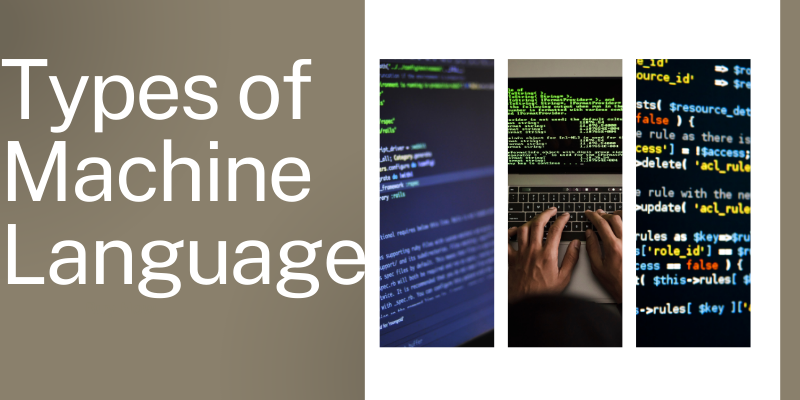Machine Language- Understanding the Basics of Programming
Published: 26 Apr 2025
Machine language is the core of all programming, enabling computers to execute instructions directly through binary code (0s and 1s). Whether you dream of coding in Python, Java, or building robotics, understanding machine language gives you a powerful foundation. Let’s dive into this essential topic that drives the digital world!
What is Machine Language?
Machine language is a low-level programming language composed entirely of binary digits – 0s and 1s – that a computer’s hardware can directly interpret and execute. It acts as the building block for all higher-level programming languages, translating human instructions into operations computers can understand.
Bullet Points
- Definition: A low-level programming language in binary form.
- Core Feature: Directly executed by computer hardware.
- Purpose: Serves as the foundation for all higher-level programming languages.
Machine Language Explained A Metaphor
Machine language is like Morse code for computers. Just as Morse code uses dots and dashes for human communication, machine language relies on 0s and 1s to issue precise instructions to computer hardware. Higher-level languages such as Rust, Go, and Visual Basic all depend on this fundamental layer to function.
Industry-Specific Perspectives on Machine Language
Education
Machine language introduces students to the basics of how computers interpret and process instructions, creating a strong foundation for learning programming languages.
Technology
Machine language powers vital operations like booting operating systems and running crucial background processes.
Healthcare
Embedded systems using machine language drive functionalities in medical devices and advanced diagnostic equipment.
Importance of Machine Language

Machine language bridges the critical gap between hardware and software. Its binary format allows direct communication with a computer’s CPU, which leads to faster and more accurate processing. Understanding machine language gives programmers a closer insight into how computers operate, essential for fields like software development, game design, and AI.
Bullet Points
- Foundation: Forms the basis of all programming languages from Python to Java.
- Efficiency: Guarantees swift and precise operations.
- Hardware Integration: Directly communicates with computer hardware.
Future Relevance of Machine Language
As we move toward innovations like AI, quantum computing, and cybersecurity, machine language remains critical. Its compatibility with evolving architectures ensures it will continue powering next-generation technologies.
How Machine Language Works
Machine language transforms high-level instructions into binary code, enabling the CPU to interpret and execute commands directly. Each binary instruction corresponds to specific operations like data transfer or calculations, powering larger processes.
Machine language is tailored to a computer’s hardware architecture. High-level languages such as C or Rust are compiled into machine code, blending ease of programming with direct hardware communication.
Bullet Points
- Input: Binary instructions written for the CPU.
- Translation: High-level languages are compiled into machine language.
- Execution: CPU processes these binary instructions.
- Hardware-Specific: Each architecture has a unique machine code.
Common Misconceptions About Machine Language
Misconception 1: Machine Language is Obsolete
Reality: It remains vital for hardware-level programming and optimization.
Misconception 2: Only Experts Can Use Machine Language
Reality: Thanks to compilers, programmers of all skill levels benefit from machine language behind the scenes.
Troubleshooting in Machine Language
Errors in machine language typically arise from incorrect binary code or hardware mismatches. Developers use debuggers, emulators, and simulators to troubleshoot and correct these issues effectively.
Types of Machine Language

- Native Machine Language: Designed for a specific hardware architecture.
- Microcode: Manages the internal operations of CPUs.
- Firmware Instructions: Runs essential code for devices like routers, medical devices, and embedded systems.
Applications of Machine Language
Examples of Usage
- System Programming: Core functions of operating systems.
- Device Control: Embedded in IoT devices and firmware.
- Robotics: Microcontrollers executing commands with precision.
- Gaming: Optimizing console hardware for faster performance.
- Education: Teaching core principles of computing and hardware integration.
Niche Case: Robotics
In robotics, machine language programs microcontrollers to harmonize sensors, motors, and actuators, achieving precise automated tasks.
Advantages and Disadvantages of Machine Language
| Advantages |
|---|
|
| Disadvantages |
|---|
|
Conclusion
Machine language remains the silent force behind all modern computing, making it an essential skill for anyone serious about technology. Understanding how computers read and execute commands opens doors to mastering programming languages like Python, Java, and Rust. Embrace machine language basics today, and step confidently into the future of programming!
FAQs
Binary code (0s and 1s) is the simplest way for hardware to understand and execute commands directly without translation.
Yes! Beginners can start by understanding binary numbers and gradually move toward practicing simple binary instructions.
Compilers and interpreters translate high-level code like Python into machine code that hardware can execute.
Absolutely! It’s crucial for embedded systems, firmware, and low-level hardware programming.
Its binary form is hard for humans to read and write, making it prone to errors without proper tools.
Yes, each hardware architecture (Intel, ARM, etc.) has a unique machine language.
Hardware engineers, firmware developers, and embedded systems programmers work closely with machine language.
Emulators, debuggers, and simulators assist developers in finding and fixing errors in machine code.
It helps optimize console hardware, delivering faster and more immersive gaming experiences.
Definitely! Deep knowledge of machine code aids in understanding vulnerabilities and protecting systems at the hardware level.

- Be Respectful
- Stay Relevant
- Stay Positive
- True Feedback
- Encourage Discussion
- Avoid Spamming
- No Fake News
- Don't Copy-Paste
- No Personal Attacks

- Be Respectful
- Stay Relevant
- Stay Positive
- True Feedback
- Encourage Discussion
- Avoid Spamming
- No Fake News
- Don't Copy-Paste
- No Personal Attacks





